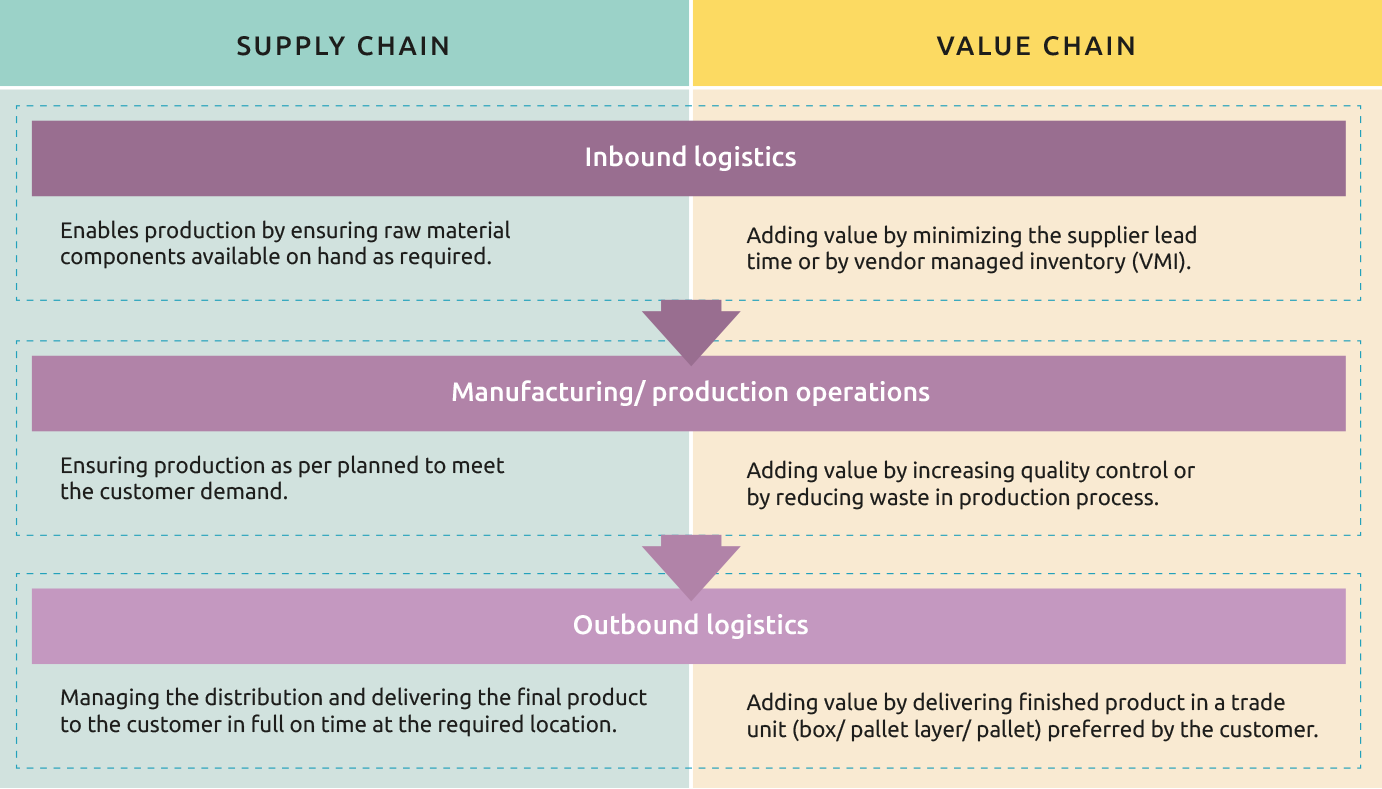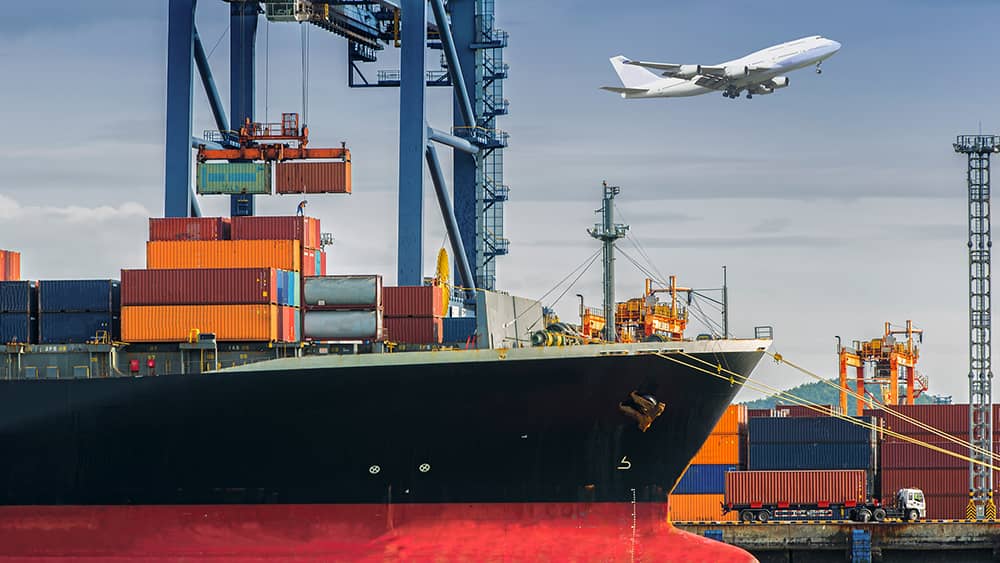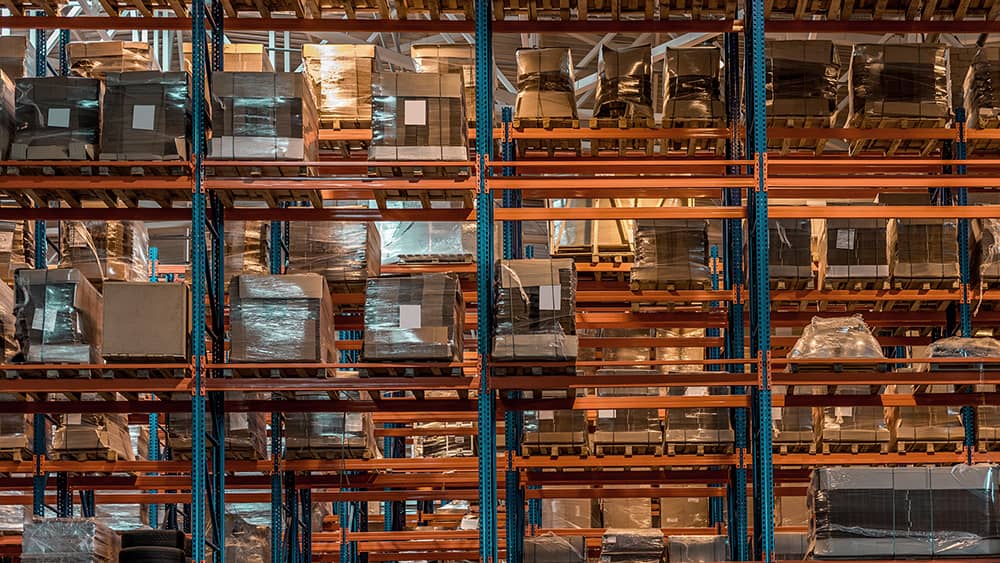A value chain can increase the efficiency of a business by adding the most value possible at the lowest possible cost. But what is a value chain exactly? And how is it connected to the supply chain? In this article, Inchainge discusses everything you need to know about the value chain.
What is value chain?
A value chain is a business model that describes the process or activities required by companies to add value to a product or service. It includes a range of activities required to bring a product to the customer starting from idea generation to distribution and anything in between. Here you can think of:
- raw materials
- manufacturing
- operations
- logistics
- sales and marketing activities
Value chain vs supply chain
As discussed before, a value chain refers to all business activities which increase the value of the finished product or service in the eyes of the customer. Where, a supply chain represents the activities required to procure, produce and deliver the final product or service to the customer.
The value chain tends to be traced in the opposite direction to the supply chain. That is, from the customer back through the supply chain activities (distribution, storage, production, and procurement of raw material). The value chain also includes activities that are not associated with the typical supply chain. For instance: product development, marketing, and after-sales service.
The relationship between value chain and supply chain
Often people relate supply chain to value chain. This is because supply chain activities such as inbound logistics, manufacturing/production and outbound logistics, offers many direct opportunities to add value for customers.
More importantly, a successful value chain is dependent on how well supply chain activities are carried out. The example here below explains how basic value offered by a traditional supply chain can have added value by performing value chain.

Why is value chain important to business?
Value chain increases the efficiency of the business so that customers can receive the product with the most value-added at the lowest possible cost. The end goal of value chain management (VCM) is to create a competitive advantage for the company by increasing the overall margin.
Nonetheless, value chain management brings various benefits. These include:
- improved flow of materials and products
- reducing waste in the supply chain process
- seamless flow of information
- enhancing the overall customer experience


Value chain analysis
Value chain analysis (VCA) is a continuous process of identifying and evaluating the primary and supporting activities, required to add value at each step the product flows, to create value for customers. The purpose of VCA is to deliver maximum value at the lowest possible cost by increasing the overall efficiency.
Michael Porter’s value chain analysis
Porter laid down the concept of the value chain by splitting the value chain analysis into two activities that are primary and secondary. These are further divided into five primary activities and four supporting ones.
The five primary activities of Porter’s value chain are:
- Inbound logistics
- Operations
- Outbound logistics
- Marketing and sales
- Service
The purpose of these activities is to create value that exceeds the cost of creating this value, therefore generating higher profit margins.
Whereas, the value chain supporting activities are there to support primary activities to achieve its competitive advantage. The four main areas of the supporting activities are:
- Procurement
- Technology development (including R&D)
- Human resource management
- Infrastructure (systems for planning, finance, quality, information management, etc.)
The picture below provides more detail about Porter’s value chain.

Want to know more?
Our business game, The Fresh Connection, has a clear focus on the value chain and the flow of materials from upstream suppliers to downstream customers. The decisions to be made are split into the clear functional areas of sales, purchasing, production and supply chain. With a different team member responsible for each area, the experience gets very close to real corporate life, in which a functional split of responsibilities is the norm, rather than the exception. Besides our business simulation games, you can read more on subjects such as supply chain management, supply chain risk management or trade-offs in end-to-end supply chain management.
 Now you know
Now you know
Now you know everything about the value chain! You discovered what a value chain is, its connection to a supply chain, what entails Michael Porter’s value chain analysis, and why it is vital for every business. In short, the value chain consists of all activities that increase the value of a product or service. This starts from idea generation to distribution and anything in between. You can identify and evaluate all of these activities with a value chain analysis. The purpose of this analysis is to deliver the most value possible at the lowest possible cost. Furthermore, Michael Porter splits the value chain analysis into two types of activities: primary and supporting activities. Primary activities create value that exceeds the cost of its creation, therefore generating higher profit margins. Whereas, supporting activities are there to support primary activities to achieve its competitive advantage.
Sources
- What is Value Chain Analysis?
https://www.visual-paradigm.com/guide/strategic-analysis/what-is-value-chain-analysis/ - The Supply Chain and the Value Chain: The Same but Different?
https://www.supplychainsecrets.com/the-supply-chain-and-the-value-chain-the-same-but-different/ - Value Chain vs. Supply Chain: What's the Difference?
https://www.investopedia.com/ask/answers/043015/what-difference-between-value-chain-and-supply-chain.asp - A Simple Guide to Value Chain Analysis: How to Build More Efficient Sales Processes
https://www.pipedrive.com/en/blog/value-chain-analysis
You might want to learn more about

Business games
A high-performing value chain needs the collaboration of team members from across the organization. Tearing down silos and creating the right cross-functional mindset, however, can be a serious challenge. So, what do you need in order to achieve success? Ideally, you’d like your team to experiment with different scenarios wherein they learn to overcome various obstacles.

Supply Chain Management
Successful supply chain management is indispensable for a successful business! Inchainge recognizes the importance of well-aligned and properly functioning value chains – understanding what supply chain management is and why it is so important is the first step towards a cross-functional mindset.

End-to-end Supply Chain Management
An end-to-end supply chain can have several benefits such as reducing labor and material costs. But what other benefits does an end-to-end supply chain have? And what are the trade-offs in supply chain management? Read everything you need to know about end-to-end supply chain in this article.
Dive into our
knowledge base
Alignment
Blended learning
Experiential learning
Learning
Supply chain
Sustainability
- Sustainability
- Carbon footprint
- Circular Economy
- Does Green Governance drive the ride to a sustainable future?
- Everything You Need To Know About Eco-Efficiency
- Greenwashing: Everything you need to know
- Is it possible to measure the Triple Bottom Line?
- Sustainability v/s Circularity
- The 3Ps Series: People
- The 3Ps Series: Planet
- The 3Ps Series: Prosperity
- The Butterfly Diagram
- The Value Hill
- What are the 3Ps of Sustainability?
- What do we know about the Triple Bottom Line?


